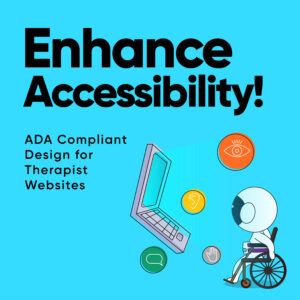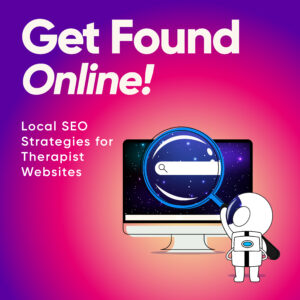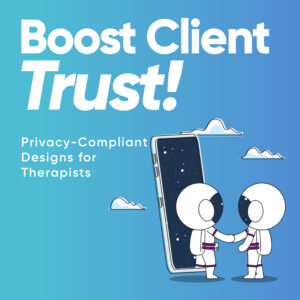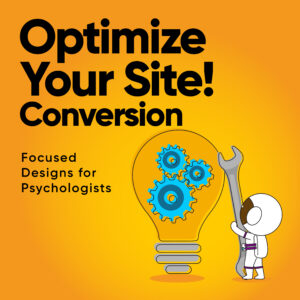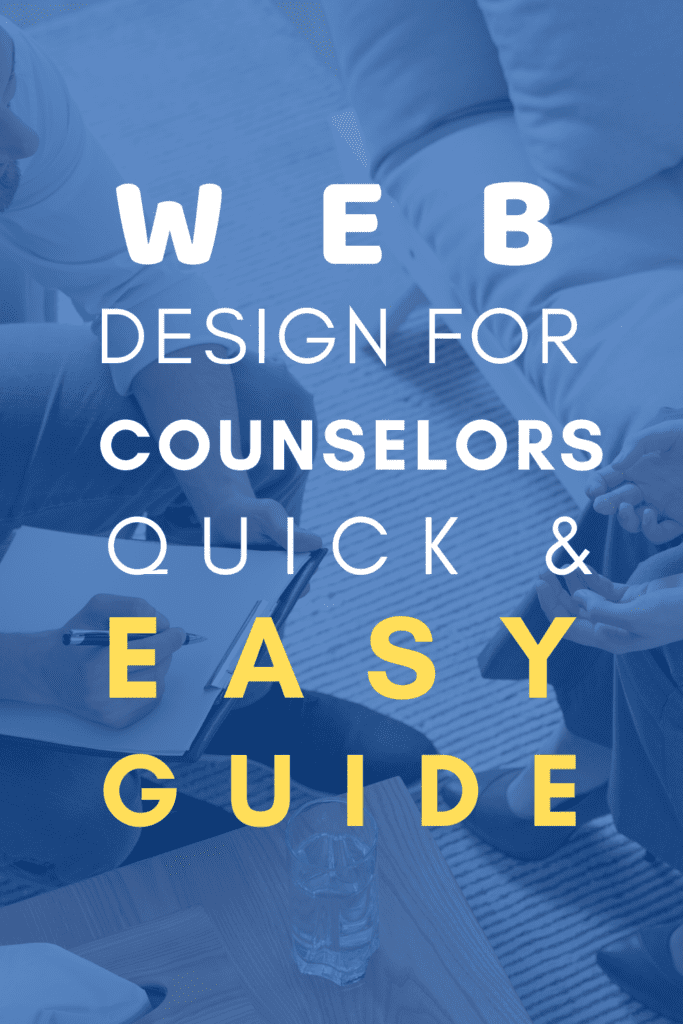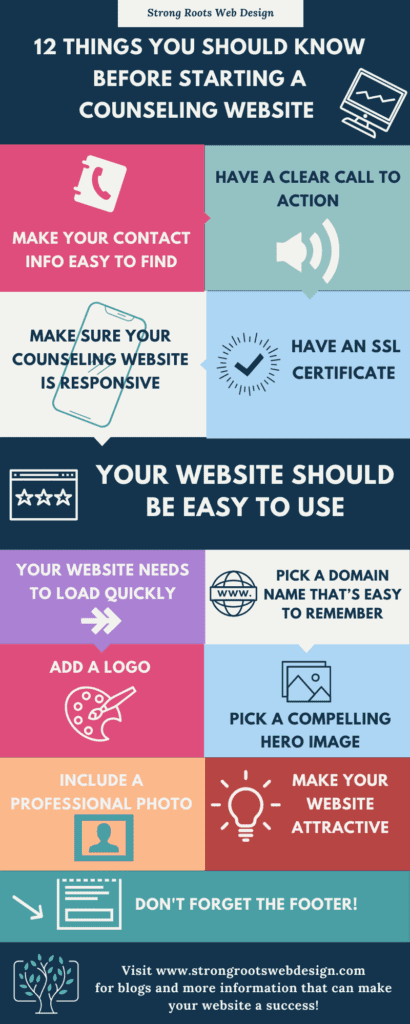
Personal Branding for Therapists : Attracting Your Ideal Clients
In the therapy world, building a genuine connection with your clients goes far beyond your skills or the certificates on your wall. It’s about creating a personal brand that resonates with the people you’re meant to help.
Have you thought about how your personal brand can impact someone’s decision to seek therapy? This blog will explore why personal branding for therapists is a game changer and how your website design plays a huge role in it.

Why Personal Branding Matters for Therapists
As a therapist, your personal brand is what sets you apart. It’s a unique combination of your skills, values, and personality that makes you memorable to potential clients. Think about it—when someone is searching for a therapist, they’re not just looking for someone who can help them cope with life’s challenges. They’re searching for someone they can relate to, someone who understands them on a deeper level.
Identify Your Ideal Clients
Before you dive into building your personal brand, you need to know exactly who you want to help. Think about your ideal clients—what age group do they belong to? What challenges are they facing?
Understanding your audience is key to creating a brand that speaks directly to the people who would benefit most from your services. The clearer you are about who you’re trying to reach, the more effective your message and website design will be in attracting the right clients.
Crafting Your Personal Brand Message
Your personal brand message should speak directly to your ideal clients. Keep it simple and authentic. Avoid jargon and use language that feels natural.
Instead of saying something like, “I use evidence-based therapeutic modalities to facilitate positive outcomes,” say something like, “I’m here to support you using proven techniques to help you overcome life’s challenges.” This approach feels more personal and relatable, making it easier for potential clients to connect with you.
The Role of Website Design in Personal Branding
Your website is often the first impression potential clients have of you. If it’s outdated or hard to navigate, you might lose them before they even get to learn about you. That’s why website design is such an important part of personal branding for therapists.
Easy Navigation
Your website should be easy to navigate, making it simple for visitors to find the information they need. Think of it like a friendly guide that helps people explore what you offer without frustration. Clear menus and titles lead your visitors to key sections like “About Me,” “Services,” and “Contact.” The easier it is for people to explore, the more likely they are to stay on your site and book an appointment.
Warm, Inviting Visuals
The visuals on your website should make people feel comfortable. Use warm colors, friendly photos, and images that reflect the atmosphere of your therapy practice. Think about how your space feels when clients walk in—your website should feel the same. Cozy, inviting visuals build trust and make visitors feel safe, helping them take that first step toward reaching out.
Clear and Concise Content
Keep your content straightforward and easy to understand. Potential clients shouldn’t have to sift through long paragraphs of text to figure out what you offer. Clear, concise messaging helps clients quickly understand who you are, what you do, and how you can help them. This makes it easier for clients to decide if you’re the right fit for their needs.
Testimonials and Success Stories
Client testimonials are a powerful tool in building trust. Hearing from others who have benefited from your services can reassure potential clients and help them feel more confident in their decision. A well-placed testimonial or success story is proof that you’re not just talking the talk—you’re walking the walk.
Easy Contact
Make sure your contact information is easy to find, with a clear call to action inviting potential clients to reach out. Whether through a contact form or direct email, the goal is to make it as easy as possible for clients to connect with you. A simple, stress-free contact process shows that you’re ready and willing to help them.
Real-Life Examples of Effective Therapist Websites
Let’s take a look at two therapists and how their websites reflect their personal brand:
Dr. Sarah Thompson’s Website
- Navigation: Dr. Thompson’s website is easy to navigate. Visitors can quickly find sections like “About Me,” “Services,” and “Contact.” There’s no confusion—just a simple path to learn more about Dr. Thompson and her services.
- Visuals: The homepage features a friendly photo of Dr. Thompson with a client, along with calming colors that make visitors feel at ease.
- Content: Dr. Thompson’s “About Me” page is conversational and relatable, explaining her journey into therapy and her passion for helping others.
- Testimonials: Real testimonials from clients highlight the positive impact Dr. Thompson has had on their lives, offering reassurance to new visitors.
- Contact Information: A simple contact form and clear phone number make it easy for potential clients to reach out.
Mark Davis’ Website
- Navigation: Mark’s website is also easy to navigate, with tabs for “About Me,” “Services,” and “Contact.” He also includes a “Blog” section where he shares valuable insights.
- Visuals: Mark’s website features nature-inspired images, reflecting his holistic approach to therapy. The calm, earthy tones create a peaceful atmosphere.
- Content: Mark’s “Services” page uses clear, simple language to describe the issues he helps with and his therapeutic methods. A brief video introduces Mark, adding a personal touch.
- Testimonials: Success stories from clients are integrated into the homepage, making it clear that Mark’s approach works.
- Contact Information: Like Dr. Thompson, Mark’s contact page is easy to use, with a simple form for scheduling appointments.
Building Strong Connections with Your Personal Brand
Personal branding for therapists goes hand in hand with a well-designed website. When you know who your ideal clients are, create a message that speaks directly to them, and design a website that feels warm and welcoming, you’re setting yourself up for success.
The goal is to build lasting connections with your clients—both through your personal brand and the website design that reflects it. If you’re ready to take your therapy practice to the next level, let’s work together to create a website that resonates with your ideal clients and helps them feel confident in their decision to seek therapy.
Cultivating Connections for Therapists
Personal brand for therapist website design is a powerful tool that attracts the right clients and builds lasting connections. As therapists, the path to success involves introspection, defining your ideal clients, crafting an authentic brand message, and weaving it seamlessly into an inviting website design.
Connecting with your clients in a way they understand and adding a touch of warmth and expertise to your website is the key to success in this journey. Collaborating with me, therapists can start creating visually appealing and strategically designed websites that resonate with clients on a profound level.
This isn’t just about attracting ideal clients; it’s about forging enduring connections that propel their healing journey forward. We can be partners in therapeutic impact.
Let’s transform your practice through visually stunning websites and stronger client connections. Schedule a discovery call, and let’s craft a digital presence that propels your private practice to success.
Did you like this post? Share it!
Related Reads for Driving Traffic/ Marketing Your Private Practice
- Therapy Business Tips: How to Drive Traffic to Blog for FREE
- Marketing for Therapists: How to be SEEN online
- Content Marketing for Therapists: The Ultimate Guide
- Website with Social Media Integration for Therapist Websites
- Drive Traffic to Your Website by Blogging
- Start Social Media Success with Low Cost Tools for Small Businesses
- Social Media Marketing for Therapists: Content Prompt Ideas
- 6 Smart Strategies for Marketing your Private Practice
- 7 Ways on How to Hook a Reader From Start to Finish
- Traffic but no sales or clients? Here are 5 Possible Reasons.
- Social Media For Therapists – Increasing Reach and Website Ranking
- Best Ways to Drive Traffic to Your Blog
- Top 10 SEO Web Work Services for Boosting Your Website’s Visibility
- Is It Worth Making a Website for a Small Business?
- Why Help with Website Design Can Improve Your Practice
Need any of the following? Contact us!
Here are some Sample Websites We’ve Created:
- Non Profit Organization Website Design
- Examples Of Online Therapy Websites
- Group Practice Website Design
Check out our Portfolio for more!
Hi! I’m Sarah.
I help counselors and therapists have a bigger impact on the world through better client connection. I do this by creating beautiful visuals and strategically designed websites.






